Satellite images of secret North Korea bases show Trump failed
Donald Trump said he had snuffed out North Korea’s nuclear threat. But new satellite images have revealed hidden mountain bases.
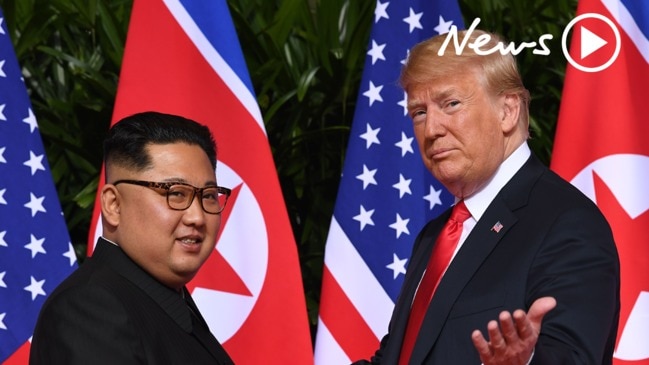
News
Don't miss out on the headlines from News. Followed categories will be added to My News.
Evidence shows North Korea is advancing its nuclear program, despite its promises to shut down military sites, with at least 13 secret missile bases uncovered.
The research from a Washington think tank reveals Donald Trump’s claim he has helped start the process of denuclearisation is inaccurate.
The sites, found using satellite images, can develop weapons ranging from short-range ballistic missiles to intercontinental ballistic missiles, according to the report published by the Beyond Parallel program at the Center for Strategic and International Studies on Monday.
Kim Jong-un may have as many as 20 undeclared missile operating bases around the country, the think tank reported, despite vowing to dismantle a major launching site and take steps towards denuclearisation.
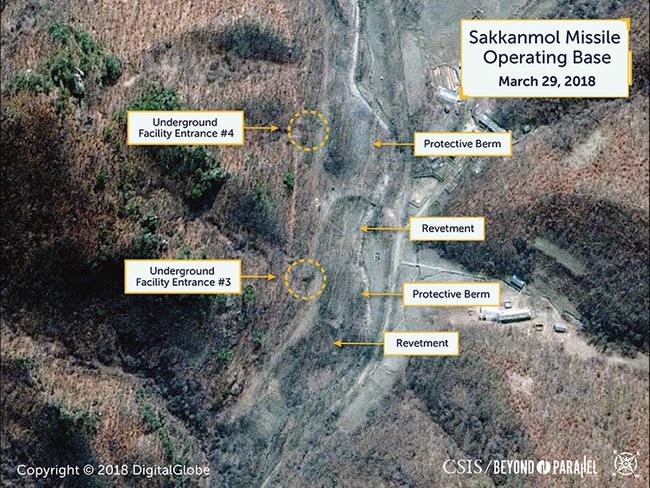
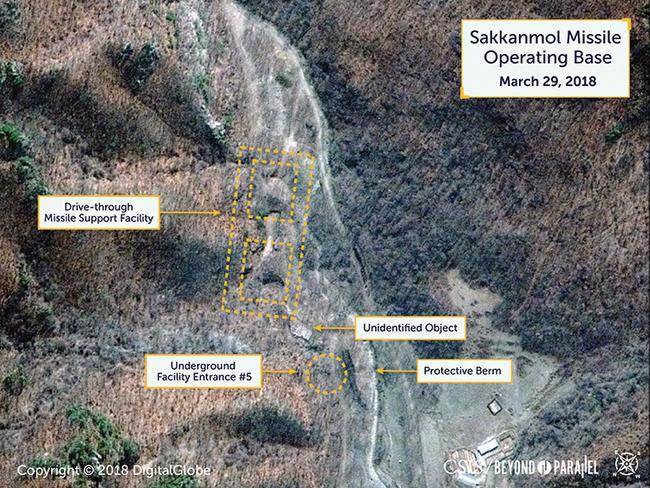
The dismantling started and then stalled, and the new images show serious subterfuge was underway. North Korea was still making improvements at other bases to assist launches of conventional and nuclear warheads.
The country has failed to take even the first step towards denuclearisation by providing a list of existing sites.
The question of how many bases exist in North Korea has been the subject of speculation for decades, but has been carefully concealed through a combination of camouflage, concealment and deception.
While missiles could be launched from the bases in an emergency, they are not intended as launch sites. The Korean People’s Army would typically move missile launchers from the bases to special launch sites.
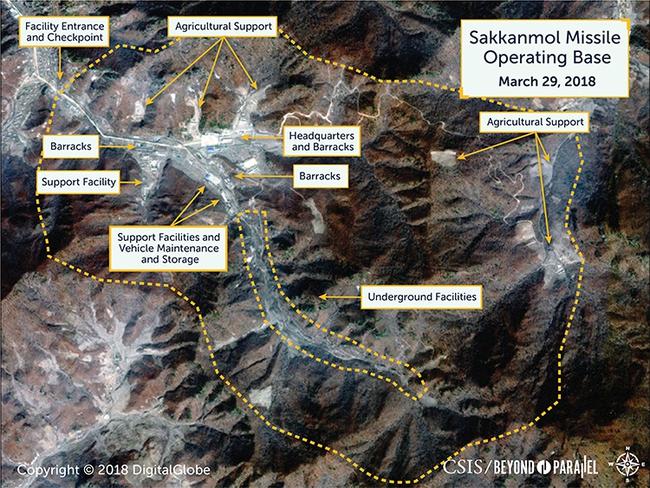
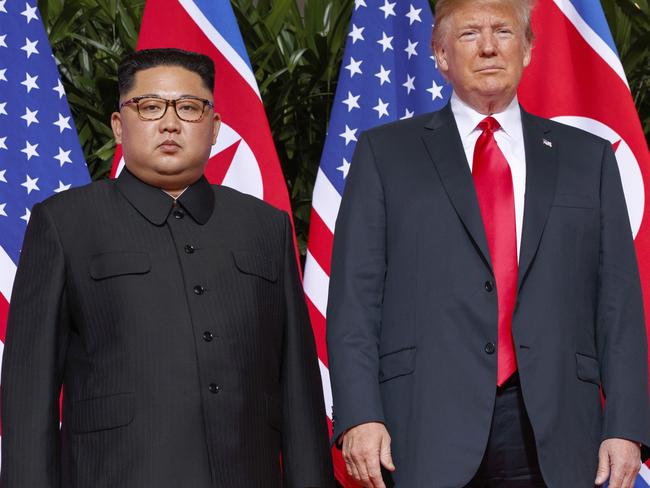
However, they would enable North Korea to inflict extraordinary damage, even if the missiles were only armed with conventional rather than nuclear warheads.
The report is a major embarrassment for the US President, who has boasted since his summit with Kim in Singapore in June of his immense diplomatic achievement.
Mr Trump said Kim had sent him “beautiful letters” and the pair “fell in love.”
In September, South Korean president Moon Jae-in announced that he and Kim had agreed on a process to completely denuclearise the Korean peninsula in a step towards peace.
The deployment pattern of NK missiles has evolved over time into three “beltsâ€: the Tactical (or Forward), the Operational, and the Strategic (or Strategic Rear) based upon their physical distance from the DMZ. pic.twitter.com/2Ed3kd6mty
— CSIS (@CSIS) November 12, 2018
“The North agreed to permanently close the Tongchang-ri missile engine test site and missile launch facility in the presence of experts from relevant nations,” Mr Moon told reporters.
The Beyond Parallel report noted that the “decommissioning of the Sohae satellite launch facility, while gaining much media attention, obscures the military threat to US forces and South Korea from this and other undeclared ballistic missile bases.”
Russia and China have both resumed trade with North Korea after noting its improved relationship with the US.
On Wednesday, after his party lost control of the House of Representatives, Mr Trump reiterated: “The sanctions are on. The missiles have stopped. The rockets have stopped. The hostages are home.”
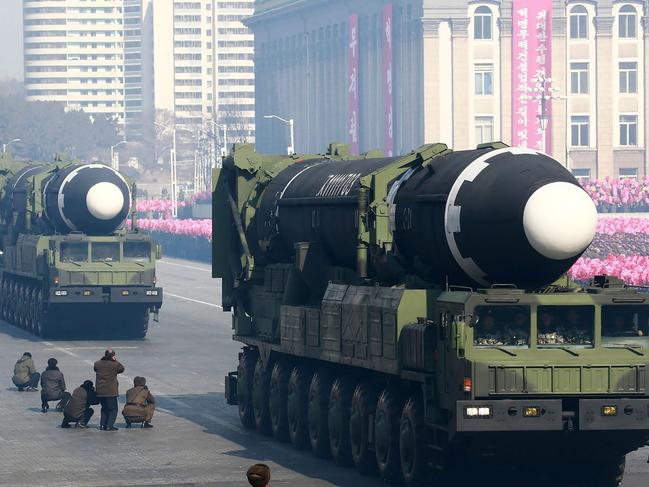
The New York Times said the revelation showed North Korea was guilty of a “great deception”. It said the network had long been known to US intelligence agencies, but not revealed to the public.
A State Department spokesman told the newspaper in a statement: “President Trump has made clear that should Chairman Kim follow through on his commitments, including complete denuclearisation and the elimination of ballistic missile programs, a much brighter future lies ahead for North Korea and its people.”
Kim has been focused on operational readiness since assuming power in 2011, Beyond Parallel reports. The KPA’s Strategic Force — responsible for operating ballistic missiles — is sizeable.
The think tank noted that the vast majority of information available on North Korea’s military programs tends to be internally inconsistent, incomplete, confusing or incorrect.
Beyond Parallel carried out extensive research, interviewing North Korean defectors and government and defence officials from around the world.
Missile operating bases are permanent facilities that contain a unit’s headquarters, barracks, housing, support, maintenance, and storage facilities.
In North Korea, they are typically rudimentary structures with few large buildings, paved roads or security measures.
Just returned from France where much was accomplished in my meetings with World Leaders. Never easy bringing up the fact that the U.S. must be treated fairly, which it hasn’t, on both Military and Trade. We pay for LARGE portions of other countries military protection,........
— Donald J. Trump (@realDonaldTrump) November 12, 2018
.....hundreds of billions of dollars, for the great privilege of losing hundreds of billions of dollars with these same countries on trade. I told them that this situation cannot continue - It is, and always has been, ridiculously unfair to the United States. Massive amounts.....
— Donald J. Trump (@realDonaldTrump) November 12, 2018
The bases tend to be small and are often situated in mountainous regions, scattered through narrow valleys.
They usually consist of a network of underground facilities to house the unit’s transporter-erector-launchers or mobile-erector-launchers, an inventory of missiles and warheads, and other technical or launch support vehicles and equipment.
The base closest to the demilitarised zone and Seoul is called Sakkanmol, which houses a unit equipped with SRBMs but could easily accommodate medium-range ballistic missiles.
Victor Cha, who led the Beyond Parallel program, told the Times: “It’s not like these bases have been frozen. Work is continuing. What everybody is worried about is that Trump is going to accept a bad deal — they give us a single test site and dismantle a few other things, and in return they get a peace agreement.”
He said the President “would then declare victory, say he got more than any other American president ever got, and the threat would still be there.”
The news came as Mr Trump railed against “rich” European allies, stating that the US pays billions “protecting other countries, and we get nothing but Trade Deficits and Losses.”
It comes at the close of a weekend during which the US president, who calls himself a “nationalist”, stood apart from allied leaders at ceremonies marking the 100th anniversary of the end of World War I.
He added: “It is time that these very rich countries either pay the United States for its great military protection, or protect themselves.”
Originally published as Satellite images of secret North Korea bases show Trump failed



